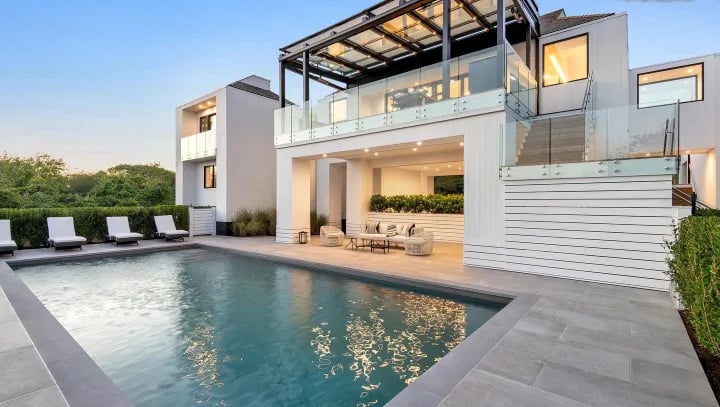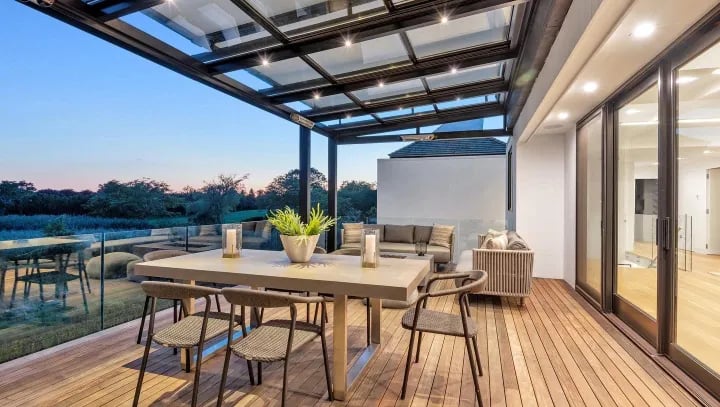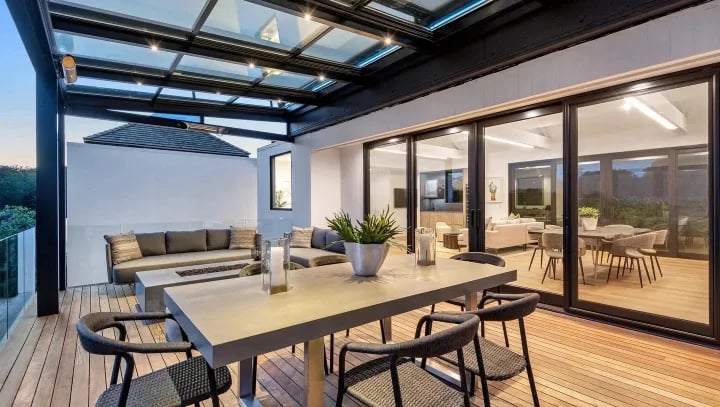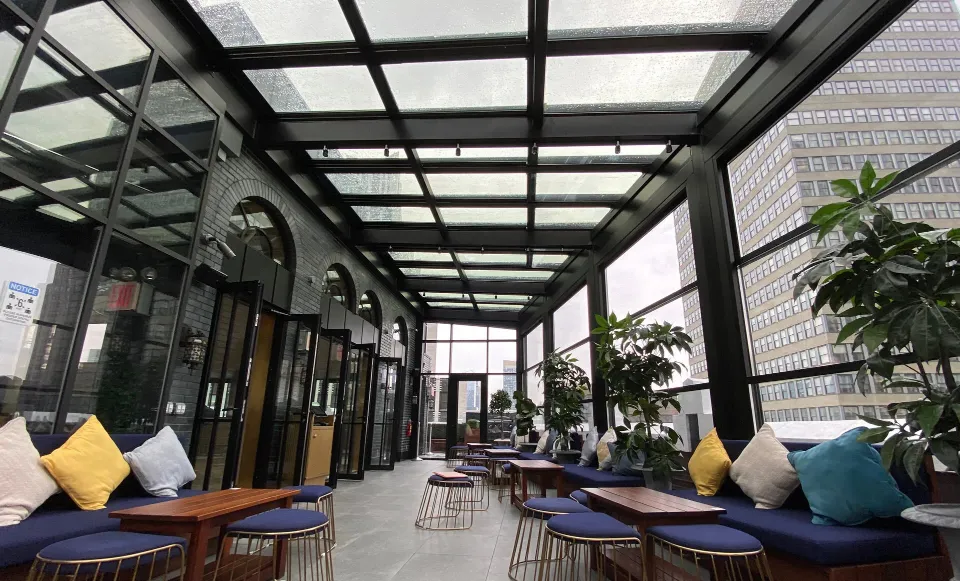How to Design the Perfect Sunroom: Tips and Tricks from the Experts
A sunroom, a space designed to bridge the gap between the outdoors and the indoors, has gained immense popularity in recent years. These versatile and light-filled rooms offer the perfect retreat for those seeking a bit of nature without sacrificing the comfort of their home. In this article, we will explore the art of sunroom design and how to create the perfect sun-drenched oasis within your home. To embark on this journey, it's crucial to understand the significance of expert insights. Designing a sunroom isn't just about aesthetics; it's about crafting a harmonious space where the elements of nature seamlessly blend with human comfort. In pursuit of this ideal, we turn to the expertise of designers and architects who can provide invaluable tips and tricks. They possess the knowledge to help you design a sunroom that not only suits your vision but also enhances your quality of life. Let's delve into the world of sunroom design and uncover the secrets to crafting the perfect sunlit sanctuary
Sunroom Design Basics
When embarking on the journey of sunroom design, it's essential to grasp the fundamental principles that underpin this unique space. Let's explore the basic concepts that form the foundation of any well-designed sunroom:
- Purpose and Functionality: A sunroom is not just an additional room in your home; it's a distinct space with a specific purpose. Sunrooms are designed to seamlessly blend the outdoors with the indoors, creating a sanctuary where you can enjoy the beauty of nature while staying protected from the elements. Their primary functions typically include:
- A Connection to Nature: Sunrooms serve as a bridge between your home and the natural world. They allow you to relish the beauty of your surroundings while providing a comfortable, climate-controlled environment.
- Versatility: Sunrooms can have a variety of uses, from a relaxing reading nook to an entertainment space, a dining area, or even a home office. The flexibility in functionality is one of their key attractions.
- Increased Natural Light: Sunrooms maximize the influx of natural light, creating a bright and inviting atmosphere. This abundant light can positively impact your mood and reduce the need for artificial lighting during the day.
- Plant Oasis: Sunrooms are often used as green spaces, allowing homeowners to cultivate a garden of potted plants and flowers, even during colder months.
- Sensory Experience: Sunrooms engage your senses, offering the sights, sounds, and scents of the outdoors while maintaining the comfort of an indoor setting.
- Aesthetic Harmony: Sunroom design should consider the aesthetics of both the interior and the exterior. This means choosing materials, colors, and furnishings that harmonize with the natural surroundings and the existing design of your home. The goal is to create a visually pleasing, integrated space.
- Climate Control: Sunrooms can experience temperature fluctuations due to the direct exposure to sunlight. Proper climate control is essential, whether through heating, cooling, or insulation, to ensure year-round comfort.
- Ventilation: Ensuring good airflow and proper ventilation is crucial, allowing you to enjoy the fresh outdoor air when desired and regulate temperature and humidity.
Planning Your Sunroom: How to Design Sunroom?
Before you dive into the design phase, it's essential to understand the significance of planning. Sunrooms are unique spaces that demand thoughtful consideration. A well-executed plan can save you time, money, and potential headaches down the road. Whether you're starting from scratch or renovating an existing space, planning ensures that your sunroom aligns with your needs and desires.

Factors to Consider
- Location: The location of your sunroom is critical. Consider where it will be positioned in your home and how it will connect to the outdoors. South-facing sunrooms capture more sunlight, making them ideal for plants, while east-facing rooms welcome the morning sun, creating a cozy breakfast nook. West-facing sunrooms are perfect for enjoying sunsets, and north-facing rooms receive the least direct sunlight.
- Size: The size of your sunroom should align with its intended purpose. Are you envisioning a cozy retreat for two, a spacious family gathering area, or a grand, multi-functional space? Determining the dimensions will impact everything from furniture choices to heating and cooling requirements.
- Permits and Regulations: Check local building codes and regulations. Some areas might have restrictions on the size and location of sunrooms, so it's crucial to understand the legal aspects of your project.
- Budget: Establish a realistic budget. Sunroom design can range from modest to extravagant, so knowing your financial boundaries from the start will help you make informed choices during the design process.
- Architectural Integration: Consider how the sunroom will integrate with the existing architecture of your home. A well-designed sunroom should complement the style of your house and look like a natural extension rather than an afterthought.
- Functionality: Determine the primary function of your sunroom. Will it be a cozy space for relaxation, a dining area, a greenhouse, or a multi-purpose room? This decision will influence the design and layout.
- Window Selection: Sunrooms are characterized by an abundance of windows. Choose the right type of windows to maximize natural light, ventilation, and energy efficiency.
- Accessibility: Ensure your sunroom is easily accessible from the main living areas of your home. A smooth flow between spaces enhances the usability and enjoyment of your sunroom.
Selecting the Right Materials
Selecting the appropriate materials is a pivotal step in the process of designing a sunroom that meets your needs and withstands the test of time. Sunrooms come in various materials, each with its unique advantages, and understanding these options is crucial in making an informed decision.
- Glass: Glass is the defining feature of a sunroom, as it allows for an unobstructed view of the outdoors while letting in copious amounts of natural light. Tempered glass is often used for its durability and safety features. One of the primary benefits of glass is its ability to create a seamless connection with the surroundings, making it the ideal choice for those who wish to immerse themselves in the outdoors from the comfort of their interior space.
- Aluminum: Aluminum is a popular choice for the structural framework of a sunroom due to its lightweight, rust-resistant, and low-maintenance properties. Aluminum framing is sturdy and can support a significant amount of glass, allowing for larger windows and doors. This material is excellent for those who prioritize longevity and ease of maintenance.
- Wood: Wood offers a classic and warm aesthetic for sunrooms. It's often used for flooring, trims, and sometimes even as a structural material. Wood provides a natural, cozy feel and can be stained or painted to match your interior decor. While it adds charm and character to your sunroom, it may require more maintenance to protect it from the elements.
The choice of materials for your sunroom should align with your design goals, your region's climate, and your personal preferences. By understanding the advantages of glass, aluminum, and wood, you can make an informed decision that ensures your sunroom is not only a beautiful addition to your home but also a durable one, capable of withstanding the elements while delivering a comfortable and inviting living space.
Maximizing Natural Light
One of the defining features of a sunroom is its ability to flood the space with natural light, creating an inviting and uplifting atmosphere. To make the most of this cherished attribute, there are several expert tips you can employ when designing your sunroom.

First and foremost, the use of large windows is key. These expansive windows not only provide breathtaking views of the outdoors but also allow an abundance of sunlight to filter into your space. The choice of window style can have a significant impact on the aesthetics and functionality of your sunroom. From panoramic picture windows to versatile sliding glass doors, the options are diverse and can be tailored to your preferences.
Skylights are another valuable addition to maximize natural light. They are especially beneficial in sunrooms with flat or low-pitched roofs, where they can be strategically placed to bring in additional sunlight. Skylights can be opened to allow for natural ventilation, enhancing the overall comfort of your sunroom.
Proper orientation is equally essential. The direction your sunroom faces can significantly influence the amount of sunlight it receives throughout the day. South-facing sunrooms capture the maximum amount of sunlight, ideal for those who crave a bright and warm space. East-facing rooms welcome the morning sun, creating a cozy breakfast nook, while west-facing sunrooms are perfect for enjoying spectacular sunsets. North-facing rooms receive the least direct sunlight, making them cooler and more suitable for certain uses, like a conservatory for plants. By implementing these expert tips, you can create a sunroom that bathes in natural light, providing a serene and inviting environment for relaxation, entertainment, or any other purpose you have in mind.
Climate Control and Comfort
Designing the perfect sunroom is not just about basking in the warmth of the sun; it's also about ensuring comfort in all seasons. Maintaining a comfortable temperature is crucial for making your sunroom a year-round retreat. To achieve this, you'll need to consider several key elements.
Proper heating and cooling systems are essential. Depending on your climate and the level of insulation in your sunroom, you may require a heating source for the colder months and cooling for the hotter ones. Options range from traditional radiators and air conditioning units to energy-efficient heat pumps and ceiling fans.
Insulation plays a significant role in temperature control. Well-insulated walls, ceilings, and windows help trap the desired temperature inside, keeping your sunroom comfortable and energy-efficient. Double-paned, energy-efficient windows are an excellent choice for both insulation and noise reduction.
Window treatments, such as blinds, shades, or curtains, can be used to control the amount of sunlight and heat that enters your sunroom. This not only adds to the comfort but also allows you to create the desired ambiance.
Maintaining a comfortable temperature in your sunroom during all seasons ensures that it remains a functional and inviting space, offering a tranquil retreat whether it's raining, snowing, or sweltering outside. Proper planning and the use of heating, cooling, and insulation options will help you achieve this ideal balance.
Furniture and Decor
Selecting the right furniture and decor for your sunroom is pivotal in creating a space that not only looks inviting but also functions in harmony with its design. Here, we'll offer advice on how to choose the elements that enhance your sunroom's aesthetic appeal while prioritizing comfort.
First and foremost, consider the overall design and purpose of your sunroom. Whether you're creating a cozy reading nook, a dining area, or a multifunctional space, your furniture should cater to these needs. Opt for comfortable seating that encourages relaxation, and select tables and storage solutions that fit the intended use of the room.
The sunroom's aesthetic should align with the natural surroundings and the existing design of your home. Wicker or rattan furniture, for example, can add a touch of coastal charm, while wooden furnishings bring warmth and a classic look. Neutral color palettes are often favored for sunrooms as they create a tranquil atmosphere, but don't shy away from adding pops of color through cushions, throw pillows, or decorative accessories.
Furthermore, the comfort of your furniture is of paramount importance. Choose cushions and upholstery that are both cozy and weather-resistant, as sunrooms are subject to varying temperatures and humidity. Sun-resistant fabric and moisture-repellent cushions are wise investments for your sunroom furniture. Incorporating personal touches, such as artwork, potted plants, and decorative lighting, can elevate the ambiance of your sunroom. These elements bring character and a sense of homeliness to the space. By thoughtfully selecting furniture and decor that complements your design and prioritizing both comfort and aesthetics, your sunroom can become a truly inviting retreat.
Bringing the Outdoors In
One of the core attractions of a sunroom is its ability to seamlessly blend the indoors with the outdoors, creating a fluid transition between the two worlds. To achieve this harmonious connection with the surrounding landscape, there are several techniques you can employ.

Landscaping plays a significant role in creating a sense of continuity. By positioning your sunroom to overlook a garden, water feature, or scenic view, you'll feel as if you're enveloped in the outdoor beauty. Well-manicured gardens or natural landscapes outside your sunroom windows can enhance the visual experience.
Potted plants and indoor gardens are also popular ways to bring the outdoors in. These green additions not only improve air quality but also contribute to the natural, serene atmosphere of the sunroom. Consider a variety of plants, from low-maintenance succulents to lush tropical species, depending on your level of gardening interest and expertise.
Outdoor furniture, crafted for comfort and durability, can be a valuable addition to your sunroom. The use of wicker or teak furniture, for instance, can evoke a seamless transition between the indoor and outdoor areas, creating a cohesive and inviting atmosphere.
Maintenance and Care
As you've designed and furnished the perfect sunroom, it's essential to ensure that it remains in top shape over the years. Proper maintenance and care are crucial for preserving the beauty and functionality of your sunroom. Here's a guide to help you keep your sun-drenched oasis in impeccable condition:
- Regular Cleaning: Sunrooms are prone to accumulating dust, pollen, and dirt, so regular cleaning is essential. Use a soft brush, microfiber cloth, or a vacuum cleaner with a brush attachment to clean windows, walls, and surfaces. Pay close attention to the corners and crevices, as these are often overlooked.
- Window Maintenance: Check your windows for any signs of wear, such as damaged seals or cracked glass. Promptly address any issues to maintain the integrity of the windows and ensure they remain energy-efficient.
- Flooring Care: The type of flooring in your sunroom will dictate the maintenance needed. Whether it's hardwood, tile, or carpet, keep it clean and well-maintained. Ensure rugs and carpets are vacuumed and cleaned regularly.
- Seasonal Preparations: Sunrooms are subject to temperature fluctuations. In the colder months, consider insulating windows and doors with weather-stripping or thermal curtains to keep the space warm and cozy. In the warmer months, ensure that your cooling system is in good working order.
- Pest Control: Sunrooms with plenty of glass can attract insects. Use screens on windows and doors to prevent unwanted visitors. Regularly inspect for any cracks or gaps that might allow insects to enter.
- Furniture and Fabric Care: Upholstered furniture and fabrics can accumulate dust and may fade from prolonged exposure to sunlight. Regularly clean and rotate cushions, and consider using slipcovers that can be easily removed and washed.
- Exterior Maintenance: If your sunroom has an exterior portion or is exposed to the elements, check for any damage to the roofing, siding, and structural elements. Repair any issues promptly to prevent further damage.
- Professional Inspection: Periodically, consider having your sunroom professionally inspected. This can help identify any potential issues early, ensuring that your sunroom remains a comfortable and functional space for years to come.
Conclusion
In conclusion, the journey to designing the perfect sunroom is a delightful adventure that promises to transform your living space into a haven of comfort and serenity. The beauty of sunrooms lies not only in their ability to bring the outdoors in but also in the endless possibilities they offer. Whether you envision a sunlit retreat for relaxation, a vibrant indoor garden, or a versatile multi-functional space, the key is to start with a well-thought-out plan, taking into account factors like location, materials, and climate control.
For those who are ready to take the next step in their sunroom project, consider the services of the Pergola Roof , experts in sunroom design and construction. Our team of professionals can assist you in bringing your dream sunroom to life, creating a space that perfectly aligns with your vision and lifestyle. Contact us and experience the beauty of the great outdoors from the comfort of your home. Your perfect sunroom is just a design away!

